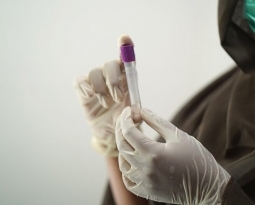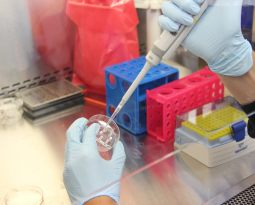North Carolina Patent of the Month – February 2021
Aerosol generating devices are used in respiratory treatments, like asthma. However getting a consistent, accurate, and verifiable dose with desired droplet size is difficult. Additional issues arise in getting patients to use inhalers properly without over or underdosing themselves. The inhaler also has mechanical issues, with product building up as it condenses along the walls following ejection. Pneuma Respiratory, Inc. have redesigned the classic inhaler to effectively overcome these limitations.
The system would involve a delivery device that uses piezoelectric power to create a stream of droplets. Piezoelectricity is a charge generated in solid materials from applied mechanical stress. The piezoelectricity oscillates an aperture plate at a frequency capable of generating a stream. 70% of the ejected droplets are less than 5 μm in diameter. The device has a 90 degree trajectory change within, which filters larger droplets from the stream, helping to create a uniform drop size. The aperture plate is dome shaped, providing direction for the stream and preventing build up along the side. Rather than mechanically forcing an ejection like an inhaler, this design uses differential pressure sensors. A change in pressure activates the ejector mechanism. As a user inhales, they pull air through the device which triggers the pressure sensor. This device will improve the accuracy of doses administered so that patients are receiving what they require, no more and no less.
About Pneuma Respiratory
Pneuma Respiratory is focused on creating therapeutic treatments for diseases of the lungs using a digital platform for inhaled drug delivery. Their focus is to improve the potential effectiveness of currently available and novel drugs, with the initial target being approved therapeutics for COPD. Pneuma is leveraging more than three decades of healthcare research and product development experience along with hand held device design and manufacturing expertise.
Are you redesigning existing technology? Did you know your development work could be eligible for the R&D Tax Credit and you can receive up to 14% back on your expenses? Even if your development isn’t successful your work may still qualify for R&D credits (i.e. you don’t need to have a patent to qualify). To find out more, please contact a Swanson Reed R&D Specialist today or check out our free online eligibility test.
Who We Are:
Swanson Reed is one of the U.S.’ largest Specialist R&D tax advisory firms. We manage all facets of the R&D tax credit program, from claim preparation and audit compliance to claim disputes.
Swanson Reed regularly hosts free webinars and provides free IRS CE and CPE credits for CPAs. For more information please visit us at www.swansonreed.com/webinars or contact your usual Swanson Reed representative.

















